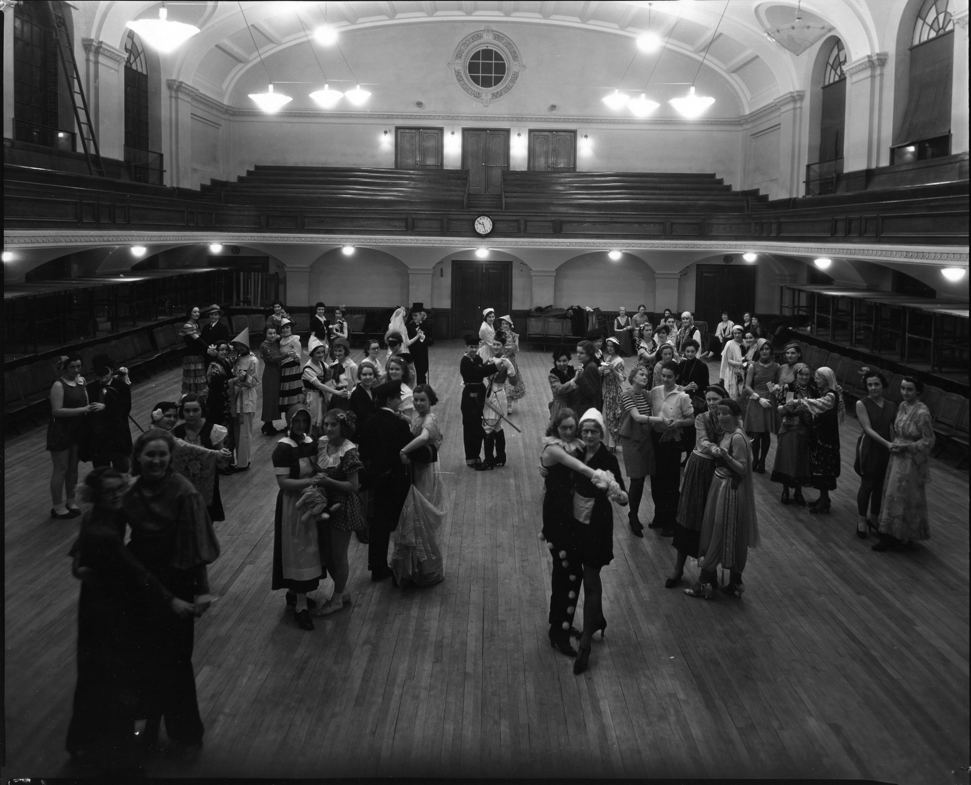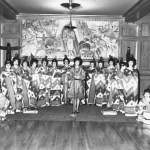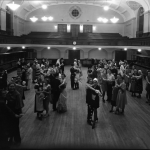In 1908, Alberta premier Alexander Rutherford’s dream came to fruition. The University of Alberta was formed in Strathcona, and class was in session. As he laid out in 1907’s University Act, Rutherford saw it as vital that any new university in the province be both non-denominational and co-educational. These were novel ideas for the turn of the twentieth century–longstanding Canadian universities like McGill began allowing women to attend in the 1880s, but they were often separated from their male counterparts. Further, negative connotations surrounding the education of women remained pervasive in this period, including ideas that education would make women physically ill, insane, or “unwomanly”. Despite this, Rutherford pushed for equal co-education from the outset, and was able to achieve it.
The University of Alberta’s first cohort was made up of 45 students, of whom seven were women. The women in the first class included Ethel Anderson, the head of the women’s athletics program at the university; Decima Robinson, the first student to graduate with a BSc from the university (and who went on to earn her MSc from the University of Alberta); and five others. Despite the push for co-education, it was obvious to these women that they had a long way to go in changing minds and achieving equality. In order to present a united front and support one another, they banded together, forming what is now thought to be the precursor to women’s fraternities at the University of Alberta: the S.I.S. The meaning of these letters was kept a closely-guarded secret for many years, even as the group shifted and changed, so readers should take a moment here to ponder what the meaning may be.
Have you guessed? S.I.S. stood for “Seven Independent Spinsters”! The group had, of course, heard about the aforementioned beliefs about the negative effects of education on women, and took the opportunity to joke about it. Further, the name of the group implicitly asks “is being a spinster really so bad?”. The women valued education over traditionalism, and weren’t afraid to show it. In fact, they vowed not to marry so that they could keep going with their careers after graduation (perhaps jokingly, as some did go on to get married after all).
The following year, the S.I.S became the Wauneita club, with all female students automatically being inducted. The club was indeed very similar to male fraternities at the time, with similar initiations (including barrel-rolling new initiates down the stairs) and club rituals. In 1929, the club was incorporated into the Students Union (though with preserved autonomy), and the name was changed to the Wauneita Society.
Despite their support for co-education and some very modern ideals, Wauneita was not always forward-thinking nor politically correct. Most of the club’s traditions, rituals, and its very underpinnings make us cringe today at the blatant and pervasive cultural appropriation. The name “Wauneita” itself is derived from a Cree word meaning “kind-hearted”. The club also incorporated other (possibly questionable) Cree words and phrases. “Payuk uche kukeyow kukeyow uche payuk,” (“each for all and all for each”) was the Wauneita motto. The club greeting was “Haw Kola?” (“How are you, my friend?).
Further, the club claimed to have adopted many rituals from Cree culture. For almost 50 years, each new initiate had a Wauneita “blanket of friendship” draped over her shoulders as part of a First Nations-themed ceremony. These ceremonies also included the use of tipis, feathers, and headdresses. Freshmen were welcome to the club by the “Big Chief”, and the club’s mascot was a young Cree girl.
Many of these rituals, and much of the overarching use of this theme, was part of one of the broader mentalities of the time of Indigenous people as belonging to a simpler place and time. In one minutes entry, members of the Wauneitas commented on the “blissful life of [their] swarthy sisters”. In some histories of the University of Alberta, in talking about the Wauneita Society, authors point to the outreach and mentorship that the Wauneitas pursued, and also argue that the Wauneita Society saw their use of First Nations imagery as a show of respect and esteem for the culture.
It is important to understand, however, that whatever the intentions of the Wauneitas were, their club appropriated heavily from First Nations culture, and much of this was based on offensive stereotypes. Additionally, these rituals were enacted at a time when Indiegnous people in Canada were in fact not legally allowed to practice their own customs and rituals, during the Potlatch Ban. In the practices they undertook banding together to defend themselves from oppression, the Wauneita Society succeeded in oppressing another group.
The Wauneita Society saw much of its activity during the First World War, organising debates, social gatherings, dramatic and musical events to raise funds for the war effort. Members of the society also worked hard alongside the Red Cross and the Soldiers’ Comfort Club to do their bit. Members also remembered many club meeting spent sewing goods to send overseas. These were typical of the activities undertaken by women’s organisations during the war, and it is interesting to note how the Wauneitas mirrored other non academic organisations in this way. The work was important, and must have been especially meaningful to women who saw so many of their male classmates head off to war during this period.
This social organisation continued throughout the early twentieth century, with Wauneitas responsible for planning dances and other social events. While the club had begun as a way to buck gender norms even to the point of avoiding marriage, by the interwar period these norms seem to have cropped up again.
Through the 1950s and ‘60s, the Wauneitas remained active, with a women’s-only Wauneita Hall in the Students Union building (now University Hall) offering female students a place to both get away from studying and study away from distractions. With wood panelling and a blazing fireplace.
The hall was lost to administration buildings later in the 1960s, and this was emblematic of the overall decline of the Wauneita Society. The group pursued some progressive action, including passing out birth control pamphlets to freshmen during registration and hosting talks on drug use, women’s rights, and birth control. However, much seemed to stay the same–the Wauneitas as a society just couldn’t change quickly enough to keep up with changing times: despite some progressivism, they emphasised the pursuit of charm, etiquette, and domestic skills throughout the ‘60s.
Additionally, the society had kept up with their policy of initiating all new female students. By the 1960s, this meant that the Wauneitas saw thousands of new initiates this year–far more than they felt they could handle. It was also felt that because there were so many new members, they could not adequately appreciate the ceremonies or sisterhood upon which the Wauneita Society stood. Members of the society also believed that it was impossible to appropriately represent such a large and diverse group of women. The Wauneita Society officially ceased in 1973.
Despite the Wauneitas’ many ups and downs, they provided an important place for women to feel supported by one another. This was especially important during the early days of the University of Alberta, when women represented a small (though accomplished) portion of the student body. Today, the university still has a variety of women’s groups listed among its student groups. There may not be any spinster societies listed, but there is certainly a promising amount of diversity among these groups.
© 2015 Sally Scott




